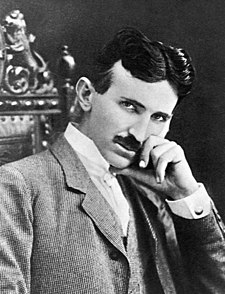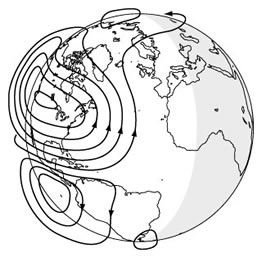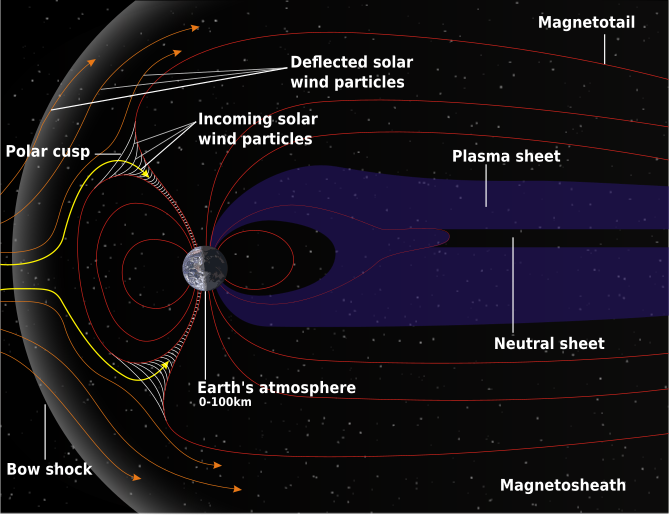Real Green Energy: It's Not Wind Farms
The Real Green Energy: Wind Farms Not the Answer
My two cents’ worth on the concept of “clean energy,” the first portion with little practical consequence:

The article at the end of this writing by E. E. Richards (http://home.gwi.net/~erichard/) provides a brief and easy-to-read (albeit, incomplete) summary of why the concept of tapping into megawatts of electricity without polluting the environment is not only feasible, but had been successfully tried a century ago. For instance, “Henry Moray in 1909, using a radioactive/semiconductor device, tuned circuits, an antenna and a ground connection, was able to tap what he called cosmic energy. Through later years of refinement, reaching as much as 60,000 watts (60 kW) drawn from a small table-top box, he could power lights and heating elements, even doing away with the external connections.”
To put it in perspective, “a kilowatt-hour is the electrical energy consumed in one hour at the constant rate of one kilowatt. The average household in the United States uses about 8,900 kilowatt-hours of electricity each year.” (Source: “Electrical Energy,” The New Book of Popular Science. 2000 edition. Grolier Incorporated, 1998.) (See also: http://www.eia.doe.gov/emeu/reps/enduse/er01_us.html, U.S. HOUSEHOLD ELECTRICITY REPORT, Energy Information Administration, July 14, 2005.)
Therefore, using Moray’s 100-year old technology, it would take 148 table-top boxes to feed the needs of a typical modern US household (using power-hungry AC and heating units, as well as inefficient incandescent light bulbs and high-voltage appliances). Of course, our electronics technology has advanced dramatically since Mr. Moray’s time, and the typical household can become far more efficient in its energy use, as explained below. Perhaps using the finest engineering and electronics currently available, a single table-top box would suffice to power a typical household….
Although anyone advocating the “absurd” concepts of “free energy,” or deviating from the well-accepted “electron theory” of electrical current flow will likely be laughed out in the scientific community, or driven off in the industry or public sector, the most elemental, the most abundant, and the most “organic” source of energy seems to lie in the natural cavities of the ionosphere/magnetosphere whereby electricity can be found, stored, amplified, transported, and transmitted without the need for conventional power plants, electrovoltaic cells or wind farms. But like I said, the concept of “free energy” is of little practical consequence, at least for now.
Earth’s magnetosphere. Source: http://en.wikipedia.org/wiki/File:Magnetosphere_rendition.jpg.
Structure of the magnetosphere. Source: http://en.wikipedia.org/wiki/File:Structure_of_the_magnetosphere_mod.svg.

Relationship between ionosphere and atmosphere. Source: http://en.wikipedia.org/wiki/File:Atmosphere_with_Ionosphere.svg.

Electric currents created in the sunward ionosphere. Source: http://en.wikipedia.org/wiki/File:Diurnal_ionospheric_current.jpg
Back in the pragmatic realm, the genial Stanford R. Ovshinsky and his wife, the late Dr. Iris M. Ovshinsky, have innovated thin and flexible solar panels that can be attached to any roof, as well as high capacity batteries that can provide the electrical needs of most households in the U.S. (See http://www.ovonic.com/oc_ecd_ovonics.cfm; the Ovshinskys’ batteries were used in GM’s beloved EV1 electric car — I strongly encourage you to watch the
“Who Killed the Electric Car” documentary, available on Netflix).

Any excess electricity generated can be added back to the grid and applied towards the needs of municipalities. The power plants can then focus on supplying electricity for industrial uses or households incapable of benefiting from solar power (due to size or lack of adequate sunlight), subject to rigorous pollution standards.
Switching to solar has an additional benefit: encouraging manufacturing of low-voltage consumer products. Traditionally, Alternating Current (AC) was needed to allow for efficient transmission of electricity hundreds of miles away from the generating plants.
During Edison’s era, it was impossible to up-convert Direct Current (DC), and long-distance low-voltage DC transmission was nearly impossible. In contrast, Nikola Tesla perfected the AC generators (which Westinghouse installed and made billions doing so), whereby AC is carried at very high voltages throughout the electric grid and then down-converted to 110-240 volts for household use throughout the world.
The system has been virtually unchanged for the past 100 years, even though electronics have improved by leaps and bounds within the past 30 years alone. As you may have noticed, your house and office today is cluttered with power adaptors (cell phone, laptop, etc.), which are needed to convert the 110V AC to 5-20V Direct Current. The process is inefficient, and much of the energy is released as heat and electromagnetic radiation through the conversion process.
Today, most households can be lit up using highly efficient, bright, and long-lasting LEDs (Light Emitting Diodes) that require 1.5-3V of DC. Many of the consumer products also run on low voltage DC. What remain are the Air Conditioning, refrigerators, and many kitchen appliances. Thanks to amplifying transistors invented years ago, we can now up-convert a 12V DC to run virtually any high-voltage appliance (you may have noticed the kW DC-to-AC inverters used in cars and trucks to operate anything from power tools to household blenders, fridges and microwaves at tailgate parties and camps).
In short, making every household self-sufficient allows for a far more efficient use of electricity (think about all the wasted material in making AC adaptors, as well as all the unnecessary heat generated by your average incandescent or fluorescent light bulb).
Further, using low voltage DC current may also prevent some of the less desirable side effects of household electricity: fires due to faulty wiring and shorts, and electrocution due to curiosity or faulty appliances. Of course, high current DC power can still be hazardous and even deadly (faulty distributors running on 6 or 12V car and motorcycle batteries can cause deadly jolts, and there seem to be no shortages of cars catching fire on the side of the road due to faulty electrical wiring), but the total number and impact of the incidences are likely to be less compared to high voltage AC.
Ironically, Thomas A. Edison, an ultra-aggressive and lawsuit-happy businessman pitched a similar argument to discredit the Tesla/Westinghouse AC power, while commonly electrocuting kittens, puppies, and even a large elephant at fairs and public gatherings to frighten the day light out of children and parents to discourage them from using the competition’s AC power, and sign up for Edison’s DC power instead. In one of history’s less proud moments, Mr. Edison even convinced local government officials to experiment with AC current in executing inmates, which took several botched efforts in carrying out the execution; the results were horrific and gruesome, where at least in one case the prisoner’s spine caught on fire while it took several more efforts to end his life. Thankfully, technology and business ethics have (somewhat) changed since Mr. Edison’s expositions.
Finally, years of research on wireless transmission of electricity have bore fruition! The concepts proposed by Nikoa Tesla in 1900 are finally perfected (or rediscovered) within the last few years: in 2007, a physics research group led by Prof. Marin Soljacic at MIT confirmed the earlier (1980’s) work of Prof. John Boys by wireless powering of a 60W light bulb with 40% efficiency at a 2m (7ft) distance using two 60cm-diameter (Tesla) coils; in the same year, a team of Japanese researchers created a wireless power-transmission device based on a sheet of plastic that is thin, flat, and flexible and can be put on desks, floors, walls, and almost any other location, delivering power to electronics placed on or near it without the use of cables or connectors; in 2008, Intel reproduced Prof. John Boys group’s 1980’s experiments by wirelessly powering a light bulb with 75% efficiency.
By the end of 2009, several companies plan to market products that can power / charge your DC gadgets wirelessly (demonstration video at: http://money.cnn.com/video/smallbusiness/#/video/fsb/2009/01/12/fsb.blum.wirelesscharger.smb; also visit http://powercastco.com/).

Once electric vehicles make a come-back, a typical household can practically become self-sufficient: no need for gasoline or electricity (although many households may still opt for natural gas for heating and cooking). Even the two-stroke engines on the lawn mower and hedger can be replaced with the electric variety and driven or charged wirelessly! For a brief background on the history of electric vehicles (and how EVs actually outsold internal combustion engines in 1899-1900, visit http://inventors.about.com/library/weekly/aacarselectrica.htm). Again, I encourage you to watch the documentary “Who Killed the Electric Car.”
In the interim, wind power seems to be the word-du-jour, and the Global Consortium for Advanced Solutions (GCAS) is in the unique position of SIGNIFICANTLY reducing the ecological damage caused by these giants (each solar turbine requires 340 cubic yards of concrete at its base, and massive amounts of rebar and other metals used in their construction and installation). GCAS has developed a one-of-kind optimization algorithm and system that with further refinement can quickly and efficiently optimize the number and placement of these metal giants to minimize their ecological and socio-econo-political impact. Moreover, GCAS is a consortium of experts ranging from materials and fire science engineering to industrial engineering, operations research, combinatorial optimization, statistics, law, decision theory, biology, geological and environmental sciences.
 When considering that a typical wind farm would require hundreds of these monsterous turbines, and each must be serviceable by large crane vehicles, one can imagine the overall impact caused by these so-called “green energy” machines (then there are the widely-reported effects of wind turbines killing birds and internally-collapsing the lungs of bats flying by, as well as the significant noise pollution and potential alteration of wind flow). The lesser of two evils has just become less of a “lesser”…
When considering that a typical wind farm would require hundreds of these monsterous turbines, and each must be serviceable by large crane vehicles, one can imagine the overall impact caused by these so-called “green energy” machines (then there are the widely-reported effects of wind turbines killing birds and internally-collapsing the lungs of bats flying by, as well as the significant noise pollution and potential alteration of wind flow). The lesser of two evils has just become less of a “lesser”…
I also encourage you to read / watch the following: For an interesting introductory video on Nikola Tesla visit: (Phenomenon: The Lost Archives – The Missing Secrets of Nikola Tesla).
PBS also made a documentary on Tesla called Tesla: Master of Lighting (http://www.pbs.org/tesla/), which is equally enjoyable. If you’re interested in books on Tesla, I recommend Margaret Cheney’s Tesla: Master of Lightning and Tesla: Man Out of Time.
A nice summary of wireless power source technology and publications can be found at: http://www.ecoupled.com/?_kk=wireless%20power&_kt=1a9811ff-1c54-465e-a5a8....
original post here: http://www.mozano.org/TechKnow/



0 Comments:
Post a Comment
<< Home